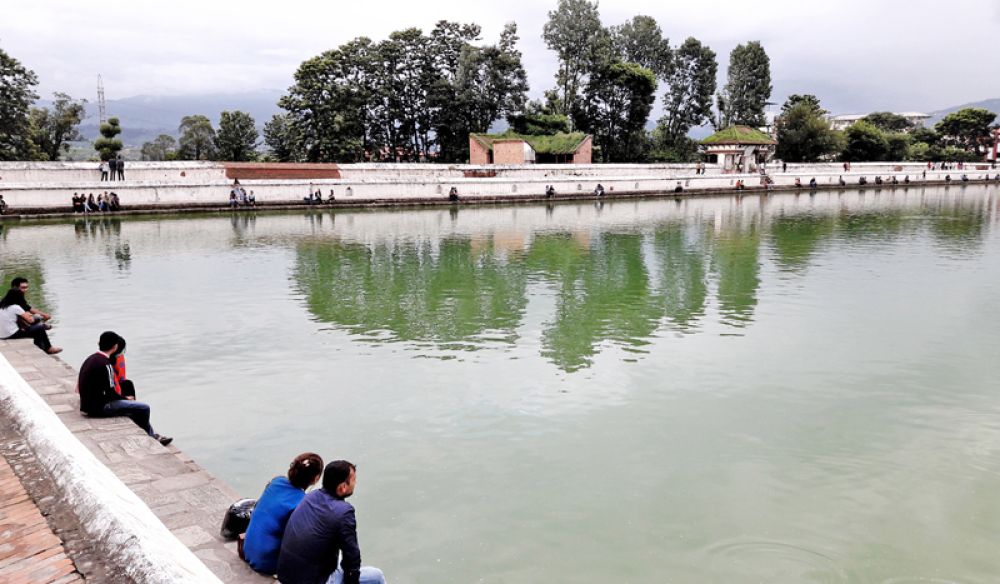

Located in the ancient city of Bhaktapur, Siddha Pokhari, also known as Indra Daha or Ta Pukhu, is a testament to the city's rich cultural and architectural heritage. As you approach the serene and expansive water pond, the reflection of the sky on its surface mesmerizes you with a blend of natural beauty and historical significance.
Constructed during the reign of King Yakshya Malla in the early 15th century, Siddha Pokhari is among the largest artificial ponds in Nepal. It holds not just water but the folklore and traditions of the Newar community, who have lived in the Kathmandu Valley for centuries. The pond served multiple purposes throughout history, from a source of water and a spot for religious rituals to a gathering place for the community during festivals and celebrations.
The timeline of tourism in Bhaktapur, and Siddha Pokhari in particular, reflects the resilience of the Nepalese people. After the devastating earthquake of 1934, which heavily affected Bhaktapur and its monuments, Siddha Pokhari was restored and continued to captivate visitors. However, it wasn't until the late 20th century, with the development of better transportation and the establishment of tourism infrastructure, that Bhaktapur—and Siddha Pokhari—began to receive the global attention it deserved.
UNESCO's designation of Bhaktapur Durbar Square, a mere stone's throw from the pond, as a World Heritage Site in 1979, boosted the city's profile. Travelers from all over the world now tread the historic paths to witness the Newari architecture, culture, and, by extension, Siddha Pokhari.
The recent years have seen a surge in responsible tourism and sustainable practices that aim to preserve Bhaktapur's heritage. Visitors are increasingly looking for authentic experiences, leading to a rise in cultural tours that include attending local festivals such as the Indra Jatra and visiting Siddha Pokhari during important lunar dates.
Community-based tourism is another rising trend where tourists partake in local lifestyles, often dining with the residents and hearing their stories about the pond and its place in the city's history.
The tourism sector in Bhaktapur, especially around heritage sites like Siddha Pokhari, has been adapting to modern needs while preserving tradition. Tourist facilities such as accommodations, eateries, and information centers have meshed seamlessly with the cultural landscape, offering travelers modern comforts without detracting from the historical ambiance.
In the wake of the 2015 earthquake, the resilience of Bhaktapur shone through yet again. Restoration projects, including efforts at Siddha Pokhari, were undertaken with reverence for traditional techniques, ensuring the experience of visiting remains as impactful as ever. Presently, visitors can delight in the tranquil environment of Siddha Pokhari, enjoying the sight of fish in its waters and the historic temples that dot its perimeter.
For anyone planning a visit, the best times to experience the serenity of Siddha Pokhari are early mornings or late afternoons when the golden rays of the sun lend the pond a mystical glow. The monsoon season, from June to August, fills the pond to the brim and revitalizes its surroundings, while autumn welcomes the grand celebrations associated with the Indra Jatra festival.
With its deeply rooted history, significance in local culture, and tranquil beauty, Siddha Pokhari stands as a beacon of Bhaktapur's heritage, inviting travelers to immerse themselves in its story and the story of Nepal's captivating past and present.